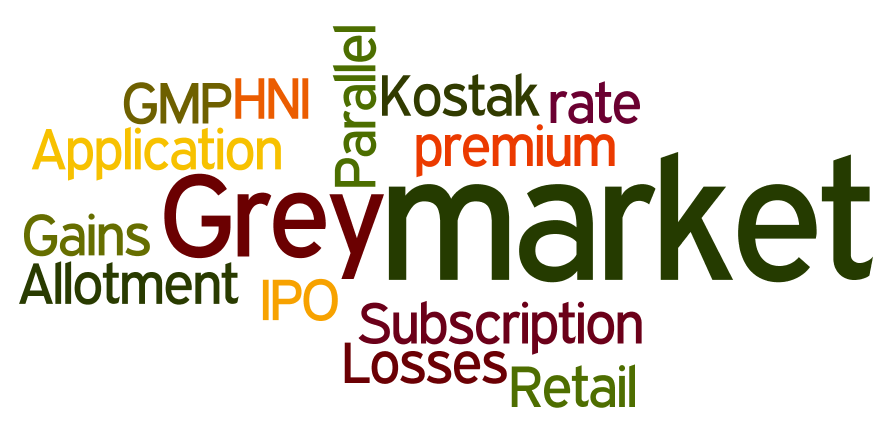
Introduction to Grey Market.
Grey Market and IPO market are two different markets. IPO is an official market for corporates to raise funds via a new issue of shares whereas Grey market is an unofficial market and operated outside the ambit of SEBI regulation.
Grey market is an unofficial setup or an over the counter market where interested traders can bid and offer shares of a forthcoming IPO.
Grey market transaction
A grey market transaction involves the unofficial agreement between an IPO investor and a stockbroker which allows investors to lock profits before the stock lists on the exchange. Under this system, shares allotted to IPO applications are sold by brokers without transferring the shares to their accounts
The grey market is a market that largely runs on trust. It is a small set of people who give bids and offers for the IPO stock at various prices. Many investors and brokers look at the grey market as a rough indicator of the post-listing performance of the stock. There are unofficial contracts represented by slips of paper and the transactions are entirely based on mutual trust.
Example of Grey Market Transaction
Let us say you applied in an IPO of SBI cards & Payments Services Ltd for 190 shares (Lot size-19 shares) at a price of 750 per share amounting to INR 1,42,500 and got allotted 95 shares. In the grey market, the stock is quoting at a premium of 30% which amounts to a premium of 225 (750*30%). Hypothetically, you can sell these shares in the grey market and lock in the price at 975 (750+225). If the stock lists on exchange at a Premium less than Grey Market Premium (GMP) i.e. 30% then you tend to benefit because you have already locked the price at 30% premium but if the stock lists at more than the GMP then you tend to lose out. I would like to add that this is an unregulated market and hence it is vulnerable to counterparty risk.
Let us understand some basic terms of grey market
Grey Market Premium (GMP)
The IPO grey market premium represents what the buyers are willing to pay over and above the quoted price of the IPO in grey market.
Kostak
Kostak is the premium amount in rupees at which IPO applications are being traded in IPO Grey Market. Usually ‘Kostak’ value is defined as the premium of a maximum lot retail application in an IPO
‘Kostak’ is especially for people who do not want to take risk with IPO allotment or listing gains.
Subject to Sauda
Subject to Sauda is a kind of deal in IPO Grey Market in India.
Unofficially, an investor can sell an IPO Application to a buyer at an agreed price (Kostak Rate) before IPO Shares are listed in the stock market.
In case of ‘Subject to Sauda’ deal, while selling IPO application in the grey market, buyer and seller agree that deal is only valid if the seller will get the allotment. If the seller doesn’t get any shares in IPO process, the deal gets void.
Key points to consider while investing in an IPO in Grey Market
- Grey market premiums moves like listed stock prices. Ultimately it’s based on demand and supply. More buyers than sellers will pull up the grey market premiums, while more sellers than buyers could pull it down.
- As no regulatory bodies are involved in grey market deals, there’s no circuit filters in place and grey market premiums may go up or down drastically in case of any positive or negative news flow.
- Please note that good grey market premium doesn’t guarantee for listing gain or long term gains. Grey market premiums may change in the duration when you apply for an IPO and when the issue gets listed.
- Grey market premium may also be manipulated by HNI/promoters which can mislead the retail investors by high premium.
Other articles that you may read:
- The What, Why and How of Reliance Rights Issue
- What are Financial Markets? What are the Securities traded in these markets?
- Types of Foreign Investment Decoded- FDI, FII, FPI and QFI
- What are structured financial instruments? – Explained
- What are Offshore Derivative Instruments or Participatory Notes?
Economyria is now on Telegram. For a simplified analysis of topics related to economy/ business/ finance, subscribe to Economyria on Telegram